GCC non-oil sector adds $1.51tn to GDP
The Gulf Cooperation Council’s gross domestic product at current prices reached $2.14 trillion in 2023, down 2.7 percent from $2.2 trillion in 2022.
Despite this moderation, the non-oil sector showed strong resilience, contributing $1.51 trillion to the bloc’s GDP and underscoring the region’s ongoing diversification efforts.
Gross national income, which reflects the total earnings of citizens and companies after taxes and transfers, stood at $1.99 trillion, down 3 percent from the previous year, according to the GCC Statistical Center, Oman News Agency reported citing the latest available data.
Meanwhile, the oil sector contributed $604 billion, highlighting the continued influence of energy price fluctuations on the region’s economy.
The non-oil sector’s share of total GDP rose to 71.5 percent in 2023 from 65 percent in 2022, growing 6.4 percent year on year. Mining and quarrying remained the largest single contributor to the GCC economy over the past five years, averaging 28.3 percent of GDP, while manufacturing activities led the non-oil sector with an average contribution of 11.7 percent.
Several non-oil industries recorded robust growth in 2023. Financial and insurance services led with an 11.7 percent increase, followed by transportation and storage at 11.6 percent. Real estate grew 8.1 percent, public administration and defense rose 7.9 percent, wholesale and retail trade expanded 7.6 percent, and education climbed 5.5 percent, demonstrating broad-based sectoral strength.
Although mining and quarrying contracted by 18.8 percent and manufacturing experienced a slight decline of 0.7 percent, other sectors and investment activity provided strong support. Exports of goods and services totaled $1.26 trillion, accounting for nearly 60 percent of GDP, while final consumption expenditure—including household, government, and nonprofit spending—rose 7.5 percent to $1.25 trillion. Gross capital formation, which covers fixed asset investments, increased 5.5 percent to $601.8 billion, signaling sustained investment momentum despite macroeconomic pressures.
From global volatility, solid fundamentals shield GCC economies
Gulf Arab states’ solid macroeconomic and financial fundamentals will keep the region resilient in the face of global economic uncertainty, including a potential sustained drop in oil prices over the next few quarters. According to the International Monetary Fund (IMF), the members of the Gulf Cooperation Council (GCC) are expected to sustain solid economic growth over the next five years against the backdrop of low inflation and strong current account and external financial positions. Oil prices and production levels, particularly in the case of swing producers like Saudi Arabia and the United Arab Emirates, will continue to strongly contribute to economic growth, despite Gulf states’ decades-long and ongoing efforts to diversify away from oil and gas production.
On UAE economy, US-China tariff truce eases pressure
With Washington and Beijing agreeing to extend trade negotiations until November 10, avoiding immediate tariff escalation, global markets are breathing a sigh of relief, and the UAE stands among the key beneficiaries, analysts say.
The decision by the US and China to keep talks alive has tempered volatility in tech exports and the oil market, both of which are integral to the UAE’s trade-linked economy. Lower external trade tension, coupled with contained UAE inflation at 2.4 percent as of June 2025, is now paving the way for a potential 25 basis-point interest rate cut in September, in line with US Federal Reserve expectations.
85pc of UAE retail investors back local stocks
A whopping 85 percent of UAE-based retail investors are currently invested in local stocks, and many are buying even more in response to global trade tensions, based on the latest edition of the UAE Retail Investor Beat by trading and investing platform eToro.
The study, which surveyed 1,000 retail investors across the United Arab Emirates, revealed that UAE-based investors are strong supporters of their local market. 85 percent are currently invested in locally listed equities, with 39 percent of respondents holding Abu Dhabi stocks, 28 percent holding Dubai stocks, and 18 percent holding both.
These investments reflect their confidence in the UAE economy. 63 percent of investors stated they are “very confident” in its current performance, and a further 29 percent indicated they are “somewhat confident”. When it comes to the long-term performance of locally listed stocks, 59 percent expressed that they are “very confident”, with a further 32 percent who are “somewhat confident”.
Qatar’s economic growth forecast at 4.8pc in 2026
Doha, Qatar: Qatar’s economy is showing signs of renewed strength heading into the second half of 2025, with Cushman & Wakefield highlighting resilience in non-energy sectors and steady progress in reforms underpinning real estate and tourism.
The report released this week by the research platform points to an upgraded GDP forecast of 2.7 percent this year, up 0.3 percentage points from earlier estimates, with growth expected to accelerate to 4.8 percent in 2026.
The adjustment reflects stronger-than-expected first-quarter (Q1) performance, when the economy expanded 3.7 percent year-on-year (YOY), driven largely by wholesale trade, retail, accommodation, and food services.
However, high-frequency indicators suggest momentum was carried into the second quarter (Q2). The June Purchasing Managers’ Index (PMI) rose to 52, a three-month high, lifting the Q2 average to 51.2 from 51.1 in Q1. “The PMI signals continued expansion in private sector activity, despite some cooling in new orders,” Cushman & Wakefield stated. Employment growth has been particularly notable, with the latest Labour Force Survey showing a 2.8 percent annual increase in Q1 headcount, marking one of the strongest hiring periods on record.



